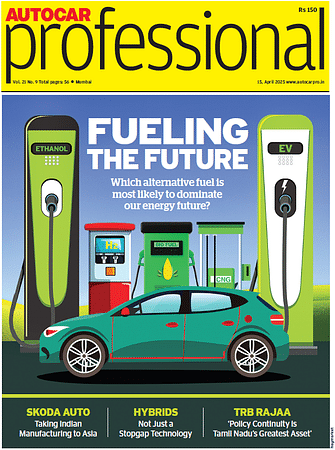“Designed on Indian streets, not in a fancy studio” - Hyundai’s SangYup Lee on 3W, 4W EV concepts
Hyundai spent two years directly engaging with rickshaw users to gain a deeper understanding of their daily needs.
At Auto Expo 2025, Hyundai revealed its E3W and E4W micromobility concepts developed in collaboration with TVS Motor to address India’s growing need for last-mile connectivity. Hyundai’s Executive Vice President and Head of Global Design, SangYup Lee, shared valuable insights into the development of the E3W, highlighting its “Made-for-India” design that focuses on practicality and affordability.
TVS collaboration
Lee explained that TVS shared its deep knowledge of the three-wheeler market to help design a vehicle that is both cost-effective and functional. Interestingly, instead of the Hyundai ‘H’ logo, the E3W carries the label "Designed by Hyundai", hinting that the E3W will be sold under a different brand altogether. The front also features a digital text screen similar to those on public buses.
Bigger, safer and more efficient
The E3W, a three-wheeler EV (as the name suggests), draws design inspiration from India’s ubiquitous rickshaw but offers significant improvements in terms of size and capability. For instance, it features a wheelbase that is 280mm longer than that of a regular rickshaw, translating into more interior space. Additionally, the track of the three-wheeler has been increased by 20mm, although the wheelbase to track ratio is still not ideal. To counter stability concerns that are inherent with three-wheelers, a sophisticated independent rear suspension has been used. Also giving the E3W the desired stability is a battery pack which sits below the driver’s seat. Owing to the larger dimensions of the E3W, engineers could successfully fit a bigger battery and a more powerful motor, enhancing the range and performance. However, specific details on the battery capacity and motor output remain undisclosed.
Lower cost, simpler design
Hyundai’s main goal with the E3W was to create an affordable yet functional vehicle. To keep manufacturing costs down, the body panels of the E3W were made flat, eliminating the need for complex stamping processes. This design led to a simpler, more affordable production method while maintaining a distinctive look. Using flat panels also simplified tooling and cut down expenses.
"We have not designed something like this before. Instead of developing the vehicle in a fancy design studio, we hit the streets, where it would be used, and spent time with rickshaw users to better understand their daily needs. This was done for two years,” Lee said. This hands-on approach allowed Hyundai to incorporate real-world feedback into the design, ensuring that the E3W met the practical requirements of its intended users.
RELATED ARTICLES
'India Can Become a Major Pillar for Us' - Marquardt Group
Björn Twiehaus, CEO of Marquardt Group, and Vishal Narvekar, the company's India GM, share their outlook on the Indian m...
Luxury Car Market to Slow in 2025: Mercedes-Benz Sees Flattish Numbers
In Jan to March of 2025, the market may witness its slowest growth since COVID-19, and if the weakness continues, the se...
‘We Must Have More Women Leaders in the Auto Sector:’ Anjali Rattan
The chairperson of the New Delhi-headquartered RattanIndia Enterprises believes that with their multi-tasking nature, wo...






 20 Jan 2025
20 Jan 2025
 9300 Views
9300 Views





 Darshan Nakhwa
Darshan Nakhwa


 Prerna Lidhoo
Prerna Lidhoo


